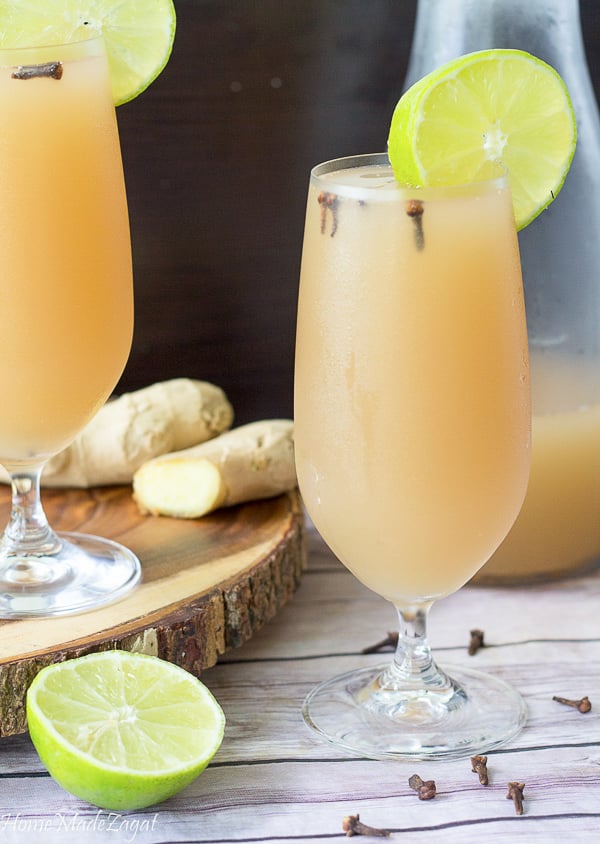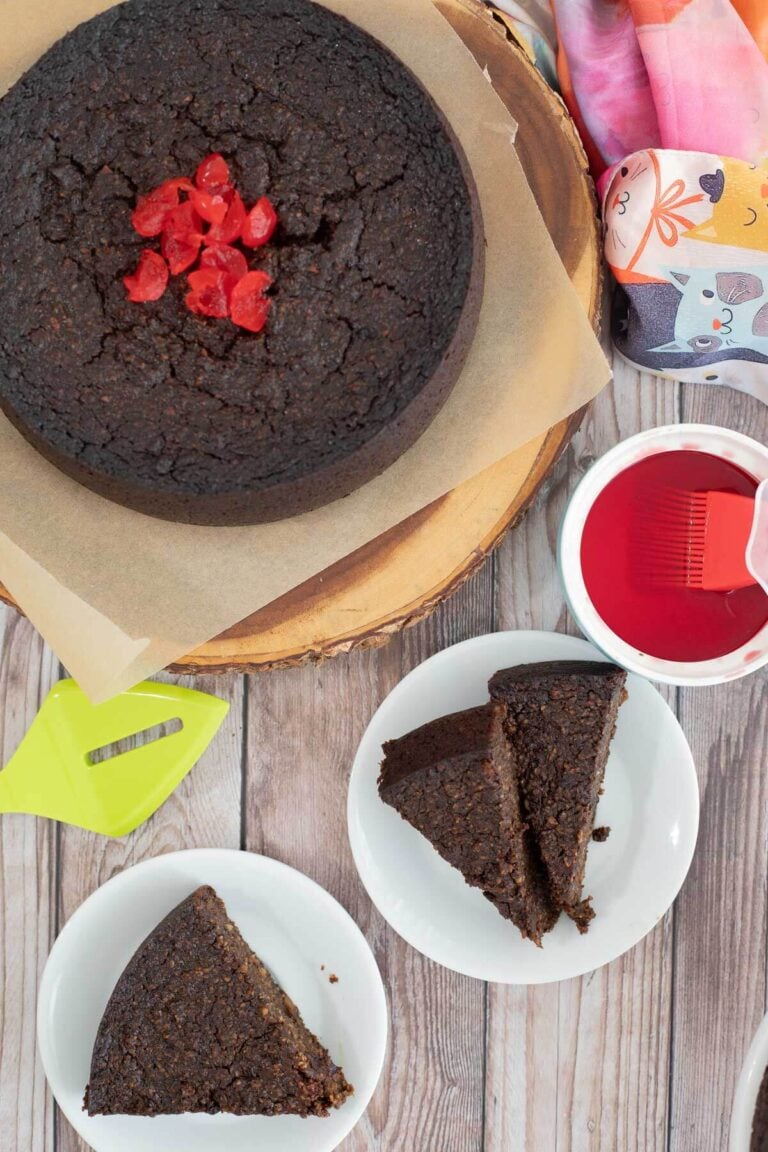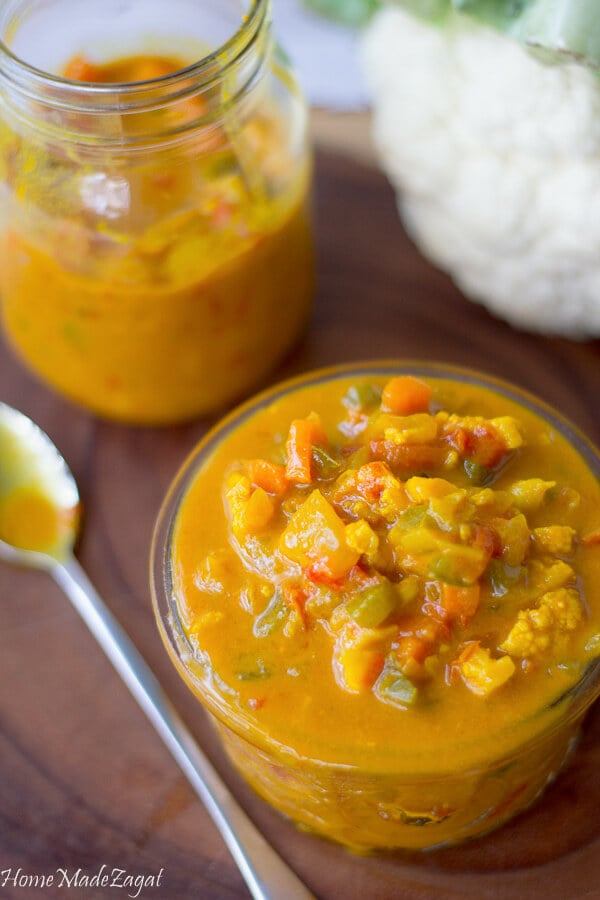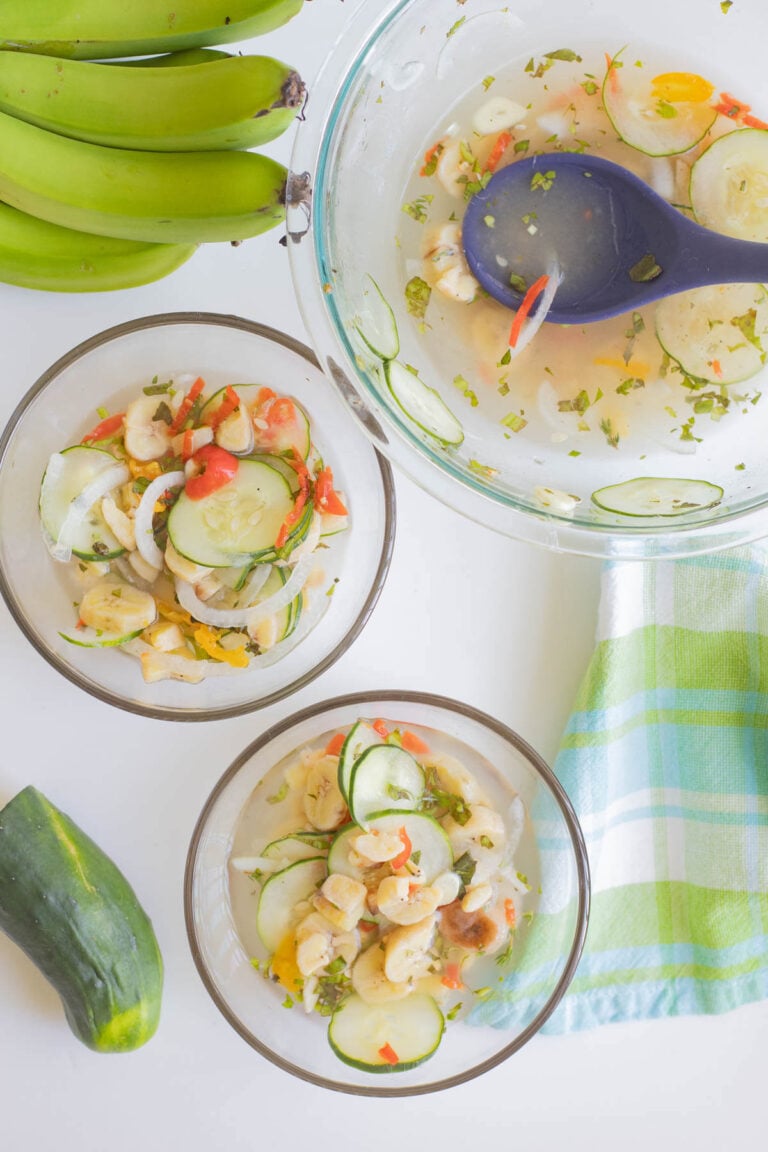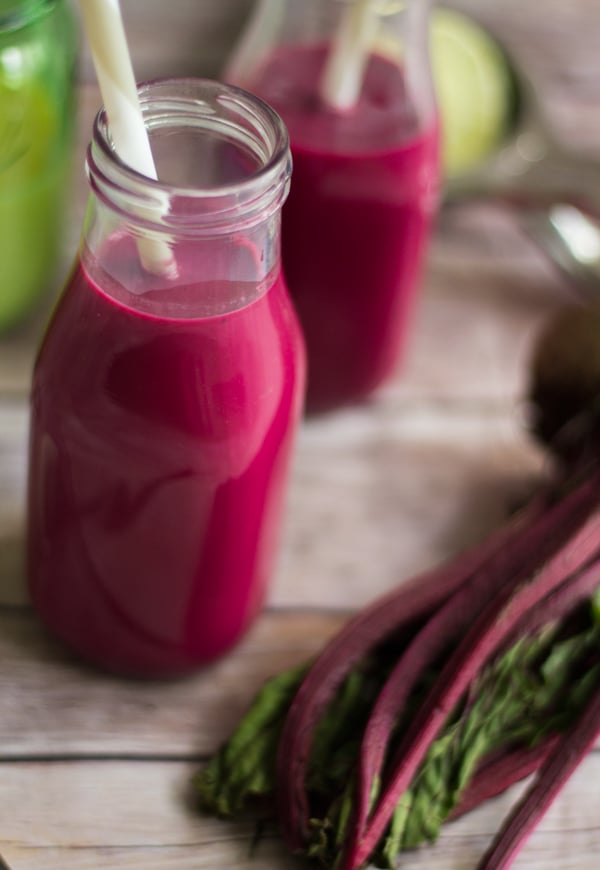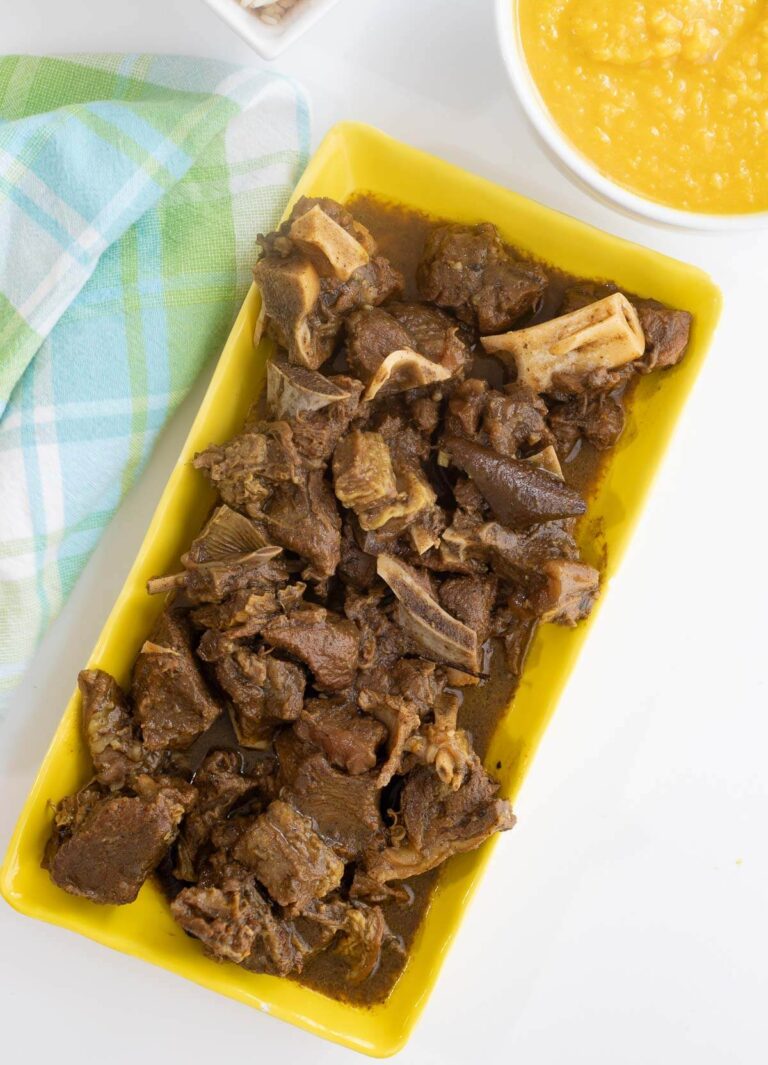Deliciously easy cassava pone recipe
You’ll want a slice, or three, of this Caribbean delicacy. This simple cassava pone recipe is made with grated cassava, coconut milk, and warming spices. It’s gooey, sweet, and hard to resist.
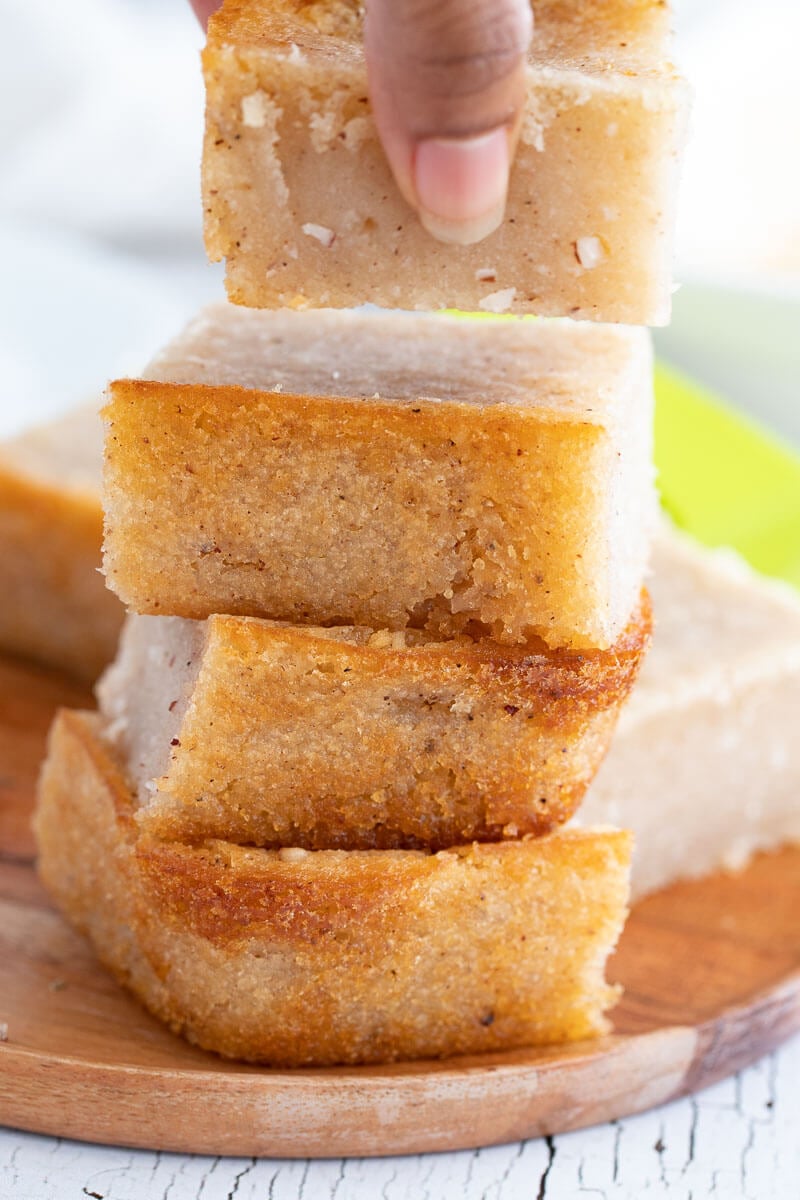
Caribbean desserts just hit different. Every bite brings back memories of being in the kitchen or sneaking extra pieces when nobody was looking.
We’ve got many beloved treats, but cassava pone is a standout. This traditional dessert is popular across the islands—some even call it pudding. It’s made with grated ground provisions, baked until golden, and full of comforting flavor.
This cassava pone recipe is simple, fuss-free, and guaranteed to be a hit. And yes, there’s always debate: team soft middle or team crusty edges? Me? I’m team “both.”
Cassava is a staple in Caribbean kitchens, and we use it in everything: dumplings, butter cassava, cassava black cake, and even drinks. It’s truly a versatile root.
What is pone
If you’ve never had cassava pone, it’s time to fix that.
Think of it like a Caribbean yuca cake, dense, spiced, slightly chewy, and just the right amount of sweet. It’s often made with one root vegetable (like corn, dasheen, or cassava), but some versions mix a few, like my Caribbean mixed provision pone made with cassava, pumpkin, and sweet potato.
What is cassava
Cassava (aka yuca) is a starchy root vegetable used widely in Caribbean, African, and Latin American cooking. It’s part of a family of hearty ingredients we call ground provisions. You can read more about them and how we use them across Caribbean dishes.
We boil it, mash it, fry it, or bake it. You’ll find it fresh, frozen, or grated in most Caribbean stores or in the “International” aisle at bigger supermarkets.
Important: Don’t eat raw cassava, it contains compounds that must be cooked to be safe. Once properly prepared, it’s good to go.
How to make cassava pone
Ingredients
This sweet treat is a simple recipe. And I love that about it. It comes together with minimal effort and pantry-friendly ingredients.
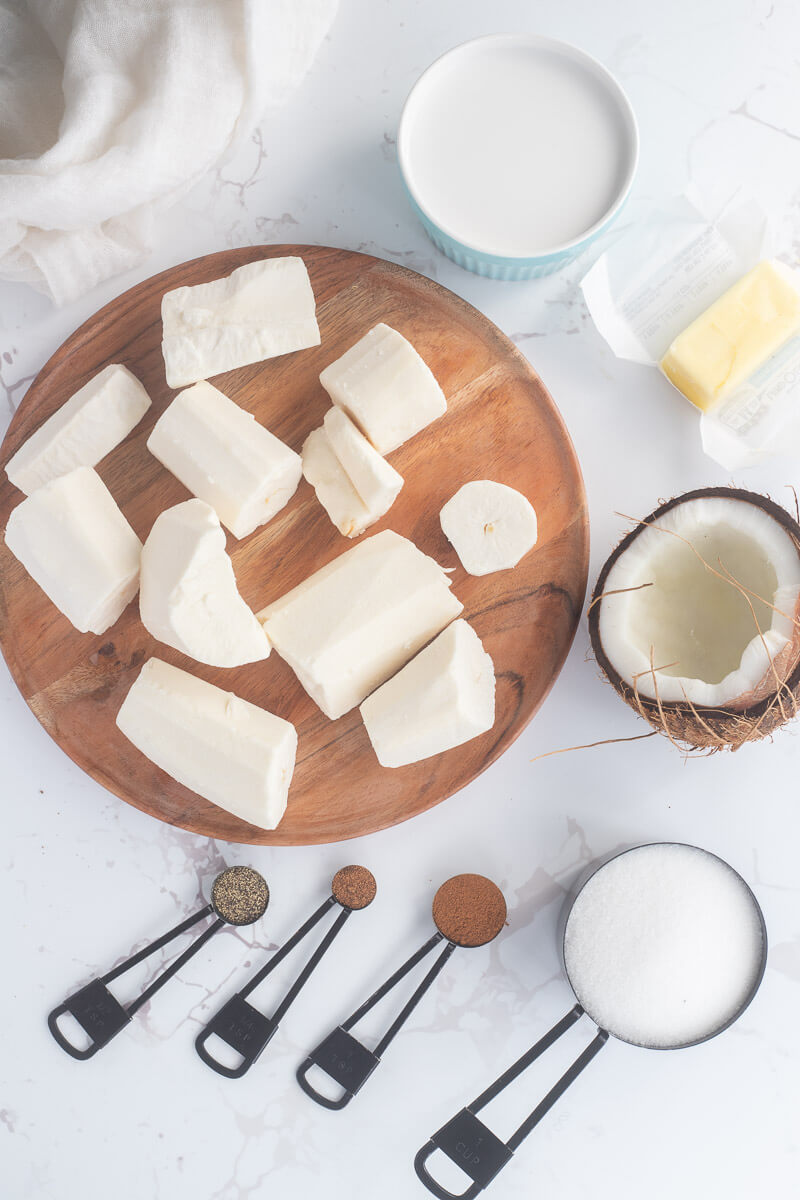
- Cassava: You can use either fresh cassava (peeled and grated) or frozen, pre-grated cassava. Make sure it’s fully thawed and drained if using frozen.
- Coconut milk: Adds richness and moisture to the pone. Canned works great, but fresh homemade milk is always a win if you have the time.
- Grated coconut: Use freshly grated coconut for the most flavor, or substitute with unsweetened desiccated coconut. If using desiccated, pulse it briefly in a processor to soften it.
- Sugar: Brown sugar gives a deeper color and slightly richer flavor, but granulated sugar works just fine, too.
- Spices: Cinnamon and nutmeg: These warm spices give cassava pone its signature cozy flavor. Use freshly grated nutmeg if you can—it makes a difference!
- Salt: Just a pinch helps balance the sweetness and brings out the flavor.
- Butter: Melted, to add richness and help with texture. Salted or unsalted works—adjust salt accordingly.
- Mixed essence: A Caribbean pantry favorite! If you don’t have it, use vanilla or almond extract as a substitute.
Equipment
- Ovenproof baking dish
- Mixing bowl
- Grater or food processor
Instructions
- Grate the cassava: Peel, core, and chop the cassava. Process or grate until fine and slightly mushy—this helps the pone hold together and bake evenly.
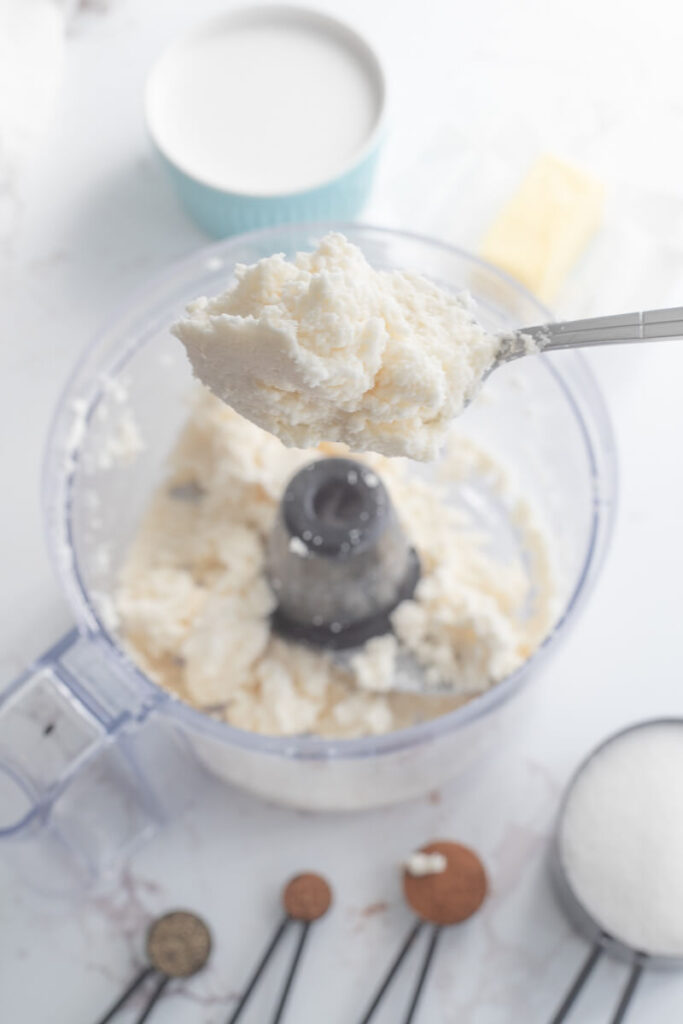
- Grate the coconut: Blend fresh coconut until fine, or pulse desiccated coconut in the processor briefly.
- Mix dry ingredients: In a large bowl, mix cassava, coconut, sugar, nutmeg, cinnamon, and salt.
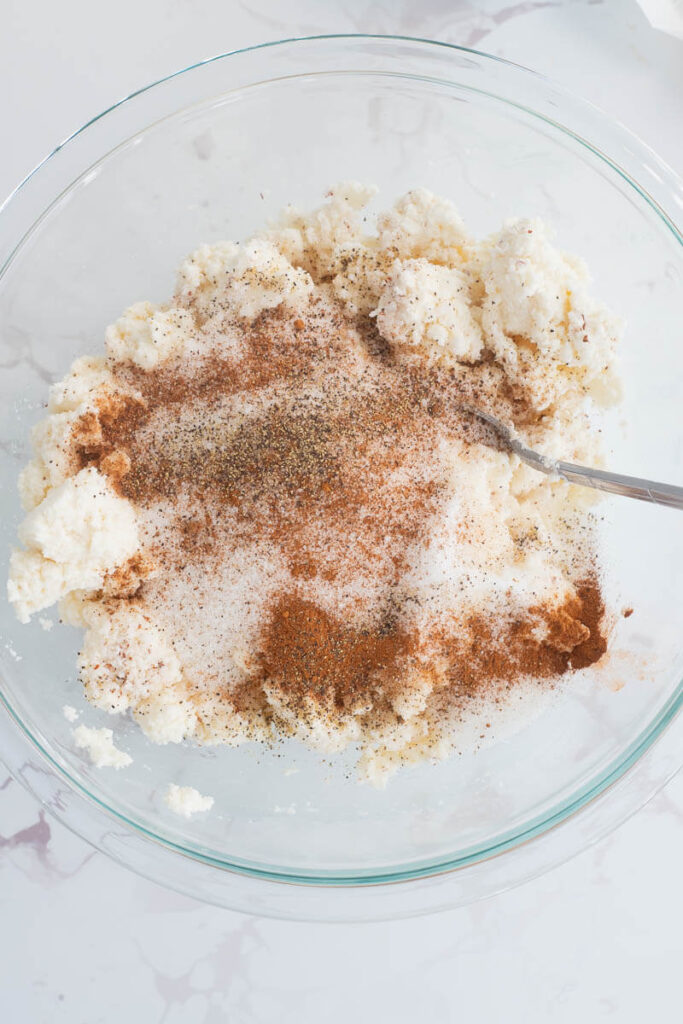
- Add wet ingredients: Melt the butter, then combine with the coconut milk and essence. Stir into the cassava mix. The mixture should be loose but not watery.
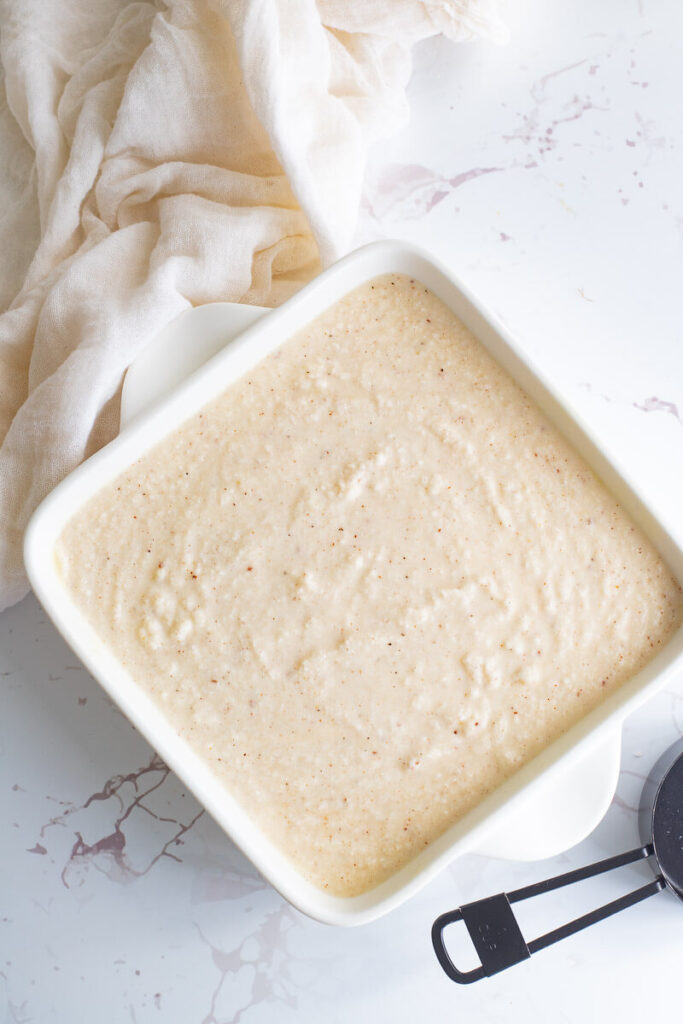
- Prep and bake: Grease a rectangular baking dish well (those edges matter!). Pour in the mixture and smooth the top.
- Bake: Bake at 350°F on the middle rack for 1 hour or until golden brown and a knife inserted comes out clean. The edges should pull slightly from the pan.
- Cool and slice: Let cool completely before slicing; overnight is best for clean cuts. But if you can’t wait (been there), let it cool at least 10 minutes.
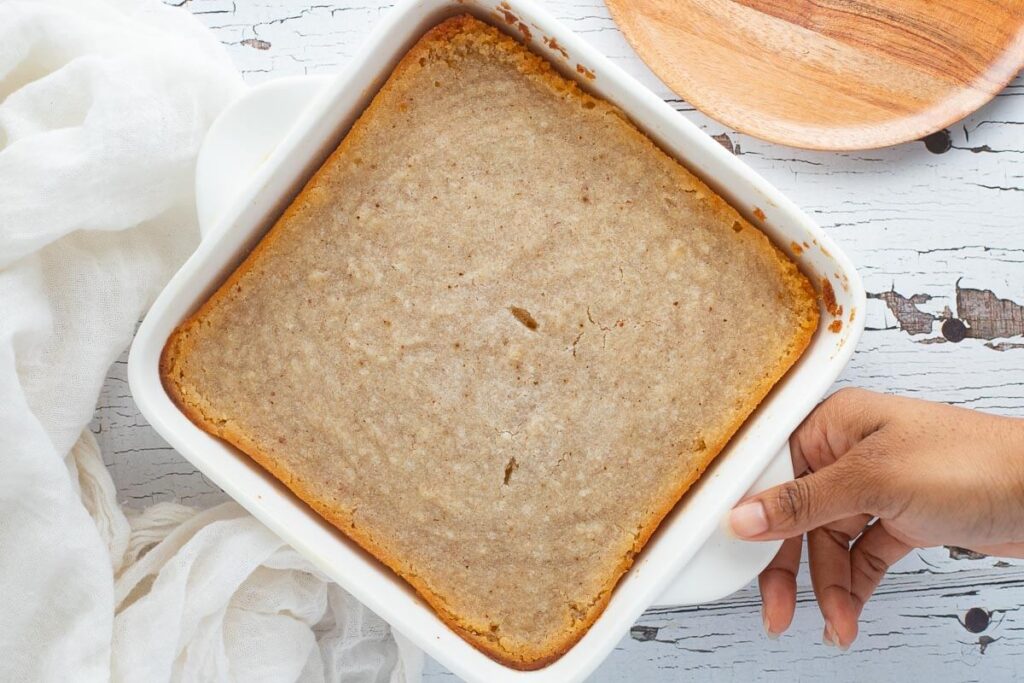
Variations & Add-Ins
This cassava pone recipe is flexible, so feel free to make it your own. Here are a few ways you can switch things up:
- Pumpkin or sweet potato – Add about ½ cup grated pumpkin or sweet potato for extra moisture and flavor. These are commonly used across the islands and give a nice earthy depth.
- Ginger – A little grated fresh ginger (½ teaspoon) adds a warm bite that cuts through the sweetness. It’s great if you love a slight zing at the end.
- Raisins – Not everyone’s fave, but if you love that chewy surprise, toss in ¼ to ½ cup.
- Brown sugar – Swapping white sugar for brown sugar deepens the flavor and gives a darker color. I actually like using brown when I want a richer finish.
- Cardamom or cloves – A pinch of either can boost the spice blend if you’re feeling fancy.
- Baking powder – Want it a little more cake-like than chewy? Add ½ teaspoon baking powder for a bit of lift.
- Vegan swaps – Use plant-based butter and your favorite non-dairy milk (like almond or oat) for a vegan version. Just make sure the milk is unsweetened so you can control the flavor.
You can mix and match depending on what you have, or just stick to the basics. It’ll still be bess!
Notes
- Want some texture? Don’t process cassava too fine, but expect a less smooth bite.
- Bake time varies based on pan size and oven. Start checking around 45 minutes.
- I used an 8×8-inch dish for this version.
Storage
Once cooled, store cassava pone slices in an airtight container or Ziploc bag.
- Room temp: Up to 1 day
- Fridge: Up to 1 week
- To reheat: Enjoy cold, bring to room temp, or toast to get those edges crispy again
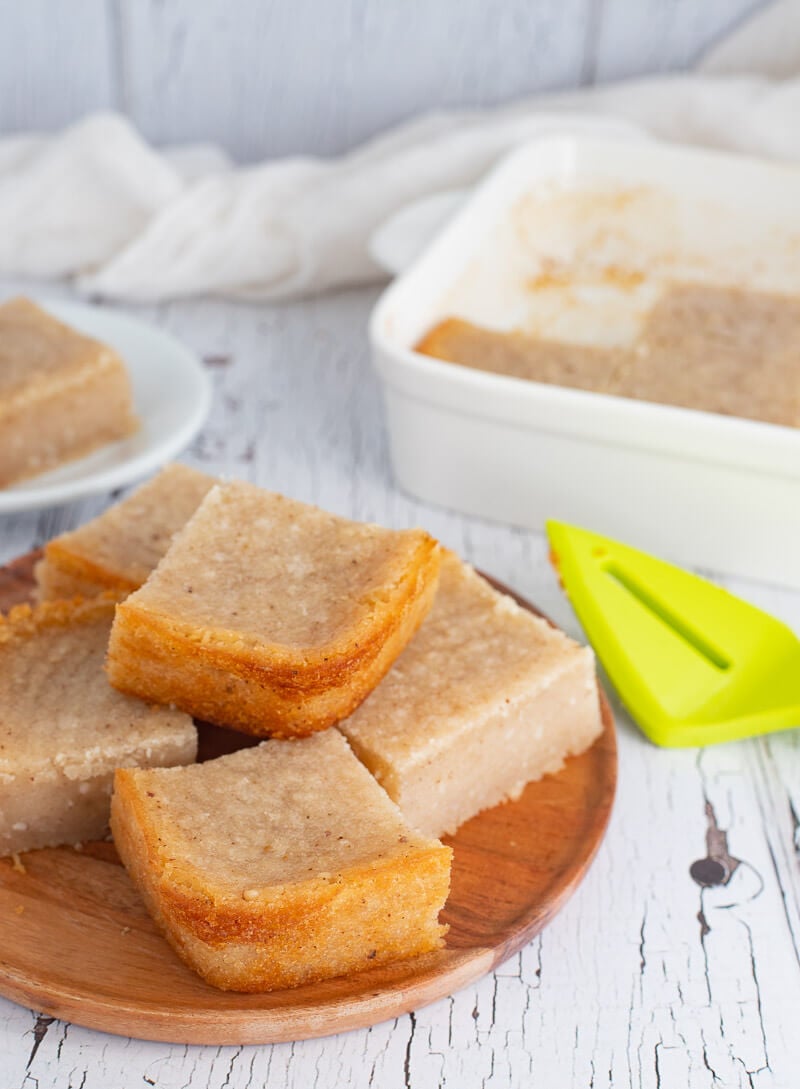
More desserts to try:
Ready to dive into more island sweets? Try one of these next—and don’t forget to drop a comment if you’re team crusty edge or team soft center!
Frequently Asked Questions
It’s sweet, chewy, and full of coconut and spice. The texture is dense and moist—think somewhere between a pudding and a cake. If made just right, the edges get crisp while the middle stays gooey.
Yes! Once it cools completely, wrap slices tightly in cling wrap and place in a freezer bag. When ready to eat, thaw overnight in the fridge. Reheat in a toaster oven or microwave if you’d like it warm.
This usually means there wasn’t enough liquid in the mixture, or it baked too long. The mixture should be loose before baking—not watery, but with movement. Also, try not to overbake it.
Definitely. Swap the butter for plant-based butter and use unsweetened coconut, almond, or oat milk instead of regular dairy.
Both fresh and frozen grated cassava work. If using frozen, just make sure to fully thaw and drain it before mixing.
Nope. If you don’t have it, use vanilla extract or almond extract. Mixed essence just gives it that classic Caribbean aroma.
Recipe

Cassava Pone Recipe
Ingredients
Method
- Preheat oven to 350°F.
- Melt butter and set aside.
- Grate cassava until fine—you should get about 2½ cups (loosely packed).
- Grate the coconut until fine—about 1 cup.
- In a medium bowl, mix cassava and coconut.
- Add sugar, cinnamon, nutmeg, and black pepper.
- Stir in melted butter and coconut milk. Mix until fully combined.
- Pour the mixture into a well-greased baking dish.
- Bake for 1 hour to 1 hour 15 minutes, or until golden brown and a knife inserted in the center comes out clean.
Nutrition
Notes
- Want a chunkier texture? Don’t grate the cassava too fine. Just add a little more liquid to help it cook through.
- Baking time may vary depending on the depth of your dish.
- Fresh or frozen cassava both work—if using frozen, be sure to fully defrost (overnight in the fridge or water).
